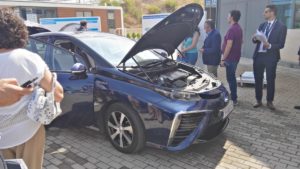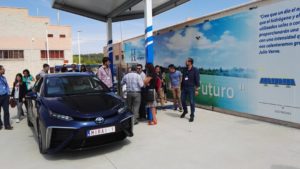Exploring the Spanish Hydropower Landscape and Global Positioning

Introduction
In the ongoing quest for cleaner and more sustainable energy sources, hydrogen has emerged as a promising option to power various industries, including transportation. In this article, we will delve into the current state of hydrogen refueling stations in Spain and analyze how the country fares in comparison to other nations in terms of hydrogen infrastructure.
1. Hydrogen Refueling Stations in Spain: A Snapshot of the Current Situation
The adoption of hydrogen vehicles in Spain has driven the need for adequate infrastructure to supply this fuel. As of today, Spain boasts a growing number of hydrogen refueling stations spread across different regions. Recent data estimates that there are approximately 5 operational hydrogen refueling stations throughout the country. These specialized refueling stations allow hydrogen vehicles to refuel and continue their journey, thus fostering sustainable mobility.
2. Global Comparison: Where Does Spain Stand?
On a global scale, Spain is positioned as a developing player in terms of hydrogen infrastructure compared to frontrunners in this field like Japan, Germany, and the United States. Japan, for instance, has been investing in hydrogen technology for decades and has established an extensive network of hydrogen refueling stations nationwide. Germany has also made significant strides in this regard, with a focus on producing hydrogen from renewable sources.
3. Drivers of Adoption: Benefits and Challenges
The adoption of hydrogen refueling stations is driven by various factors. Hydrogen vehicles offer advantages such as shorter refueling times compared to electric vehicles and extended range, making them appealing to certain user segments. Furthermore, hydrogen as a fuel has the potential to contribute to carbon emissions reduction and improve air quality in cities.
However, challenges hinder faster adoption. The initial investment in building hydrogen refueling stations can be costly, and the availability of hydrogen vehicles in the market is limited compared to conventional and electric vehicles. Additionally, producing hydrogen from clean sources remains a technical and economic challenge in many places.
4. Future of Hydrogen Refueling Stations in Spain
As Spain continues to progress toward a more sustainable future, the number of hydrogen refueling stations is likely to increase. Both the government and industry are investing in research and development of hydrogen technologies, as well as expanding infrastructure. Participation in international projects can also accelerate learning and growth in this field.
Conclusion
In summary, hydrogen refueling stations in Spain are experiencing gradual growth as the country embraces sustainable mobility and clean energy sources. While Spain is still in the process of catching up to the development levels of some global leaders in terms of hydrogen infrastructure, it’s evident that efforts are being made to increase the number of hydrogen refueling stations across the nation. With ongoing investment in research, development, and international collaboration, Spain has the potential to play a more significant role in the global landscape of hydrogen refueling stations in the years to come.

























